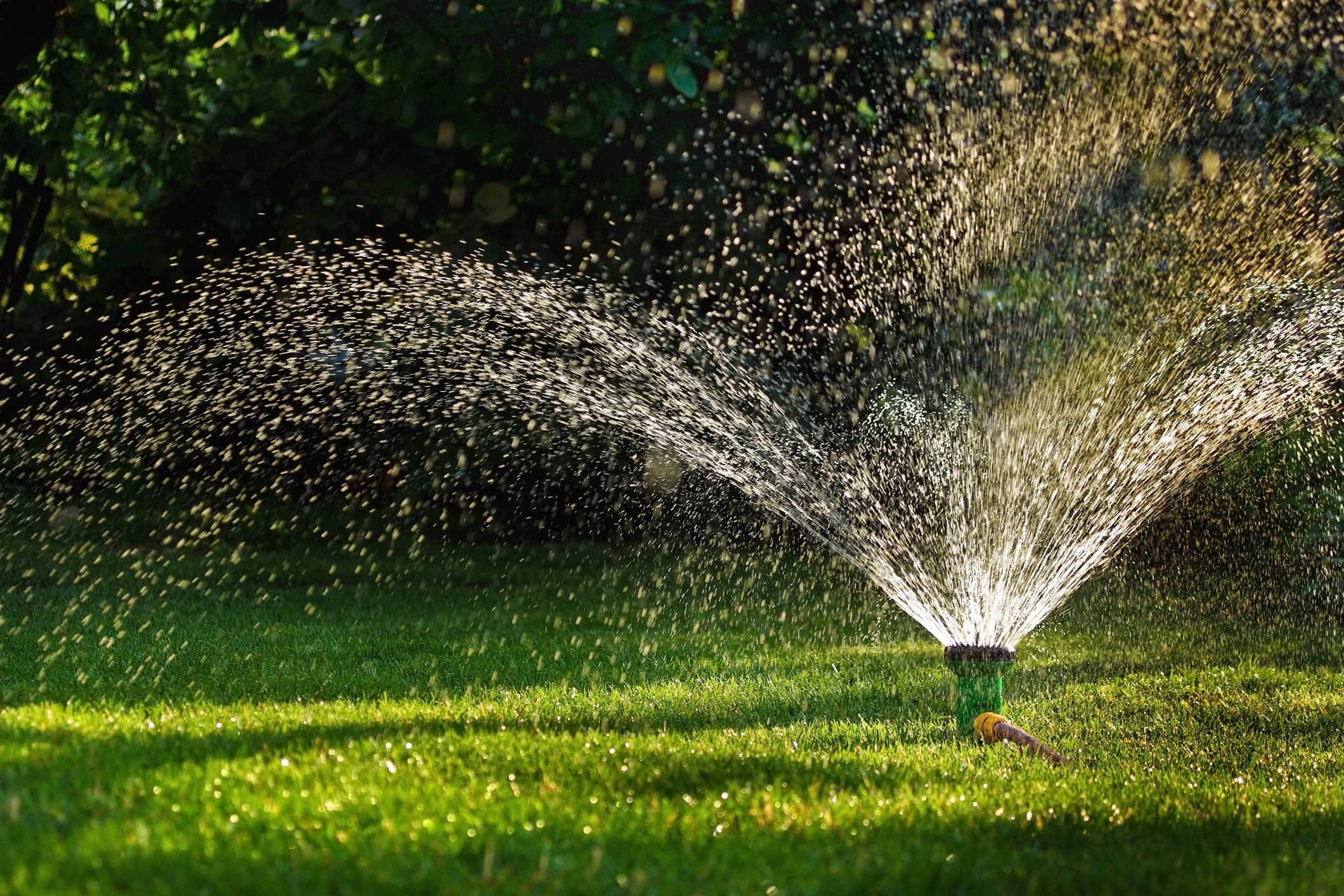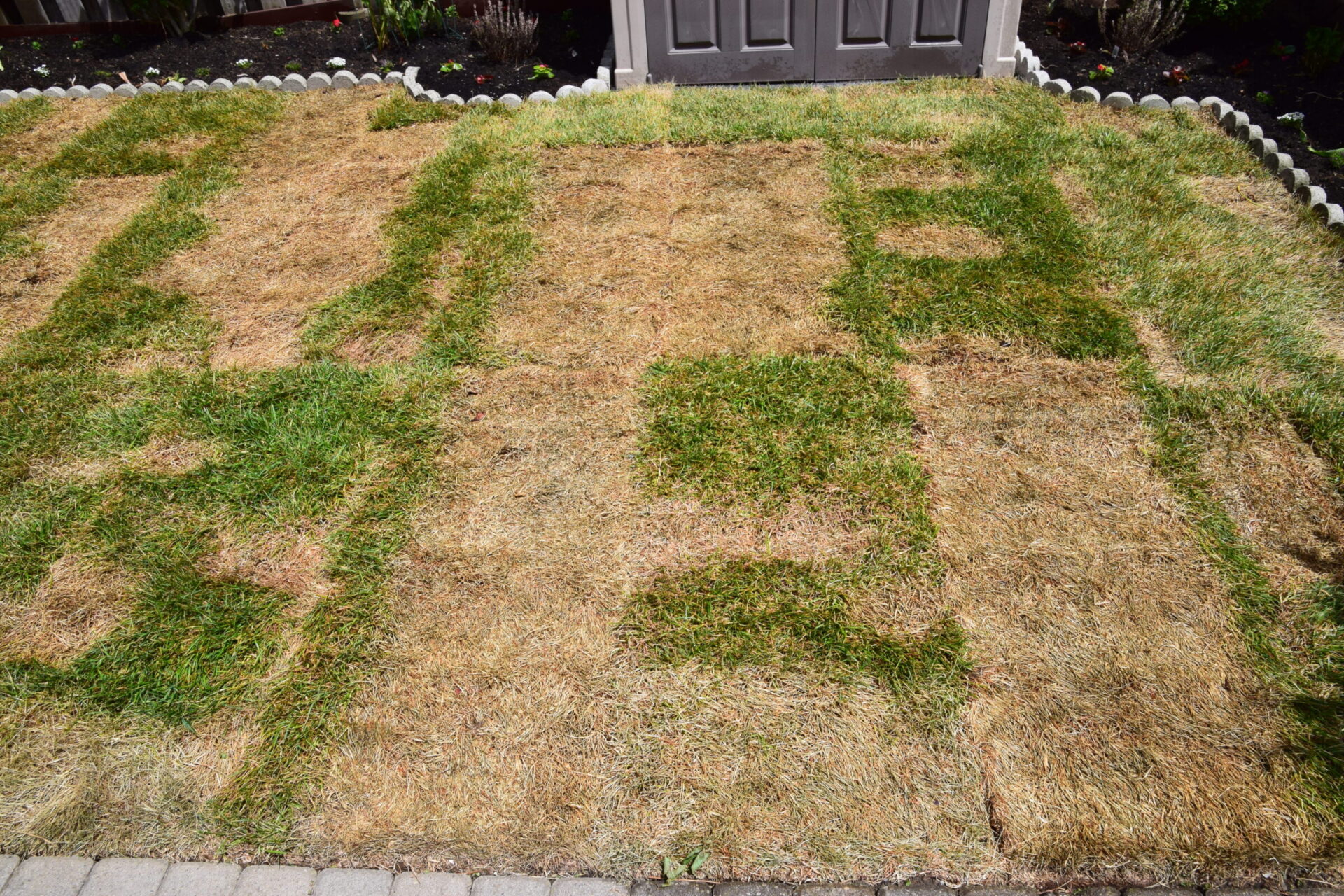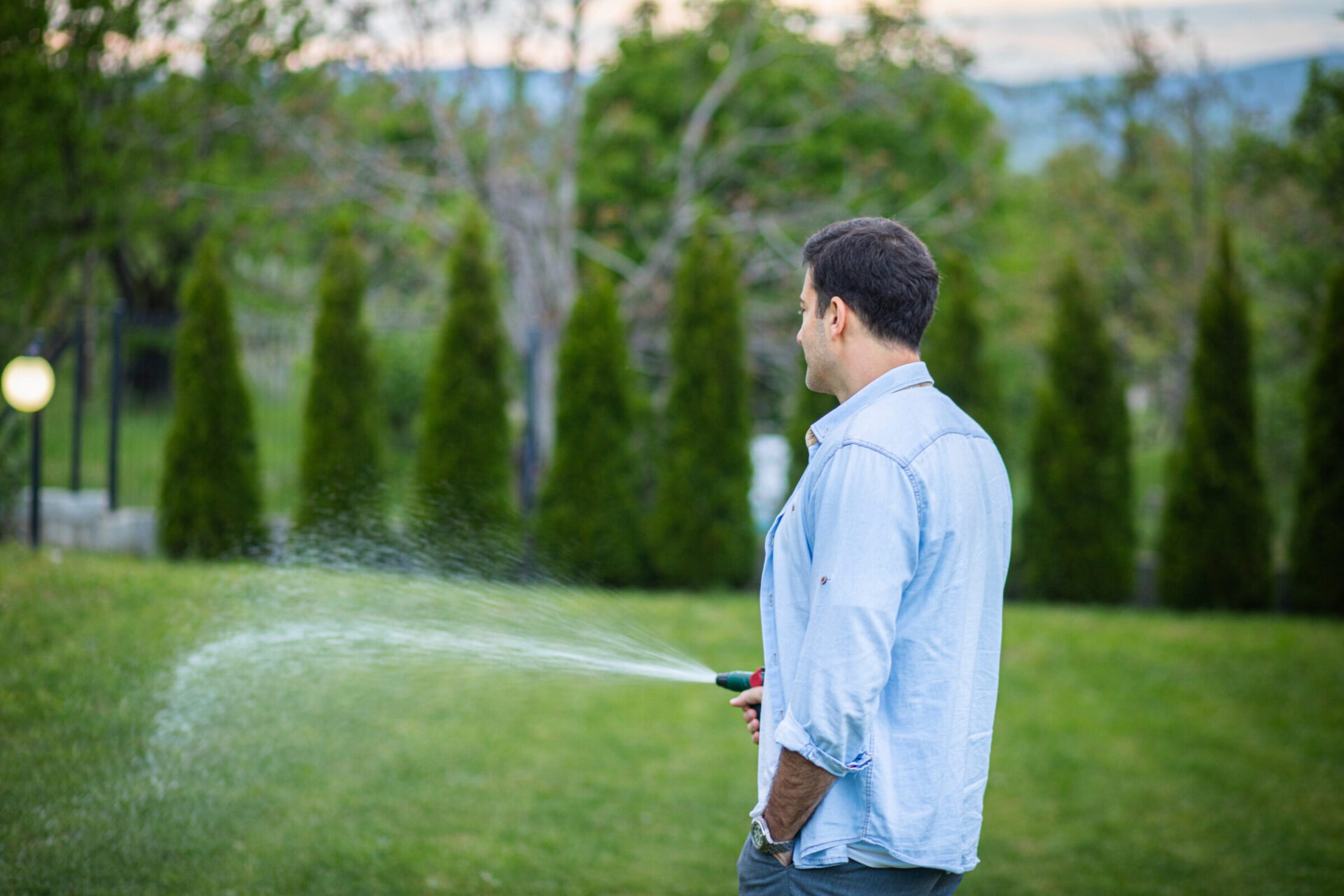Your cart is currently empty!

Watering New Sod in Toronto: Schedule, Techniques, and Common Mistakes

Watering new sod is a critical step in ensuring that the roots take hold and grow deep into the soil. Without adequate moisture, the sod cannot establish itself properly, leading to a patchy and unhealthy lawn. Proper watering not only fortifies the sod but also aids in the swift development of a resilient, green carpet. The establishment phase is where the roots grow out of the sod and into the soil, which is vital for the sod’s survival and growth.
Moisture is essential for photosynthesis, the process by which plants create food. New sod, with its shallow root system, is especially vulnerable to drying out. Many people wonder how often to water new sod. A consistent watering routine ensures that the sod remains hydrated, supporting not only root development but also the health of the grass blades. Proper watering helps the sod withstand environmental stressors such as high temperatures and foot traffic, ultimately leading to a lawn that is both beautiful and durable.
The New Sod Watering Schedule
One of the most frequent questions we encounter is, “How often should I water new sod?” Establishing a reliable watering schedule is crucial. Here’s a breakdown of what the initial weeks should look like:
First Week: Intensive Hydration
- Frequency: It is important to water your newly installed sod on a daily basis to ensure that the grass remains consistently moist. This will help the sod establish its roots effectively in the soil, encouraging healthy growth and a vibrant lawn. Regular watering is crucial during the initial period after installation, as it provides the necessary hydration for the sod to thrive. Evenly distribute water across the area to promote uniform growth and prevent any dry patches from developing.
- Timing: Early morning is typically best. It reduces the amount of water that evaporates from rising temperatures and sunlight that occur later in the day. Focus on providing a generous amount of water, ideally around one inch, to ensure that the roots receive enough moisture to promote healthy growth. This thorough soaking not only aids in the immediate hydration of the plants but also encourages deep root development over time.
This initial week is critical as it sets the foundation for root establishment. Be cautious of overwatering, which can lead to root rot. The morning watering strategy is particularly effective because it gives the grass time to dry out during the day, reducing the risk of disease. During this phase, monitoring the sod for signs of stress, such as wilting or browning, can help you adjust your watering practices accordingly.
Second to Third Week: Gradual Reduction
- Frequency: Consider transitioning your watering schedule to an every-other-day routine. This ensures your lawn receives adequate hydration without overwatering. By spacing out the watering days, you allow the soil to retain moisture and give your greenery a chance to absorb it more effectively. It’s important to monitor the weather and adjust as necessary. If there are signs of heavy rainfall, you may want to skip a watering day.
- Timing: Maintain a consistent watering schedule, especially in the early morning hours when temperatures are cooler and evaporation is minimized. As time goes on, however, we recommend gradually decreasing the amount of water you provide. This method encourages the roots of the grass to grow deeper into the soil in search of moisture. By doing so, the grass becomes more resilient and develops a stronger foundation, enabling it to withstand periods of drought more effectively.
This stage allows the sod to begin acclimating to its new environment, promoting robust root growth. As the roots extend deeper into the soil, they become more efficient at accessing water and nutrients. This period is about transitioning from surface-level watering to supporting deeper root development, which is crucial for the sod’s resilience and long-term health. Observing the sod’s response to this change will guide any necessary adjustments to ensure optimal growth.
Fourth Week Onwards: Maintenance Mode
- Frequency: Transition to a twice-a-week watering schedule, taking into consideration the varying weather conditions. This change can help ensure that you are making the most of the climate and environmental factors that can impact your plans. It is essential to remain flexible and observe the weather patterns as they change to adapt your watering schedule.
- Timing: Morning is typically still the best time. You will want to still keep an eye on the weather, especially if it has rained over night.
By this point, your sod should be well on its way to establishing a strong root system, requiring less frequent watering. The goal is to encourage drought resistance by making the roots work a little harder for water, which strengthens them. Monitoring weather forecasts can help you adjust your watering schedule as needed, ensuring the sod receives the right amount of moisture without excess. As the sod matures, this maintenance phase becomes about sustaining the health and vibrancy of your lawn through consistent care.
Techniques for Effective Watering
Understanding the right techniques can make a substantial difference in the health of your lawn. Here are some expert tips:
Use the Right Tools
Opt for a sprinkler system or a hose with a spray nozzle that provides even coverage. This ensures that all parts of your lawn receive adequate water. Using a timer can help maintain consistency in your watering routine, ensuring that each session is neither too short nor too long. Consider the layout and size of your lawn when choosing a watering system, as different setups may be better suited for specific lawn configurations.
Monitor Soil Moisture
Regularly check the moisture level by inserting a screwdriver or a similar tool into the soil. It should penetrate easily if the sod is adequately watered. This simple test can be a reliable indicator of whether your watering practices are effective. Keeping track of moisture levels over time can help you fine-tune your watering schedule, ensuring that your lawn remains healthy and vibrant.
Adjust for Weather
Toronto’s weather can be unpredictable. During particularly hot and dry spells, consider increasing watering frequency slightly to compensate for evaporation. Conversely, during cooler or rainy periods, you may need to reduce the frequency to prevent overwatering. Being responsive to weather conditions helps maintain optimal moisture levels, supporting the ongoing health of your sod. Keeping an eye on forecasts and observing the lawn’s response to different weather patterns can guide your watering decisions.
Avoiding Common Mistakes

Even with the best intentions, mistakes can happen. Here are some common pitfalls to avoid:
Overwatering
While it might seem beneficial, overwatering can be detrimental. It can lead to shallow roots and promote diseases. Always ensure water is absorbed before adding more. Excess water can suffocate the roots, depriving them of oxygen and leading to poor growth or even decay. Observing how quickly water drains and the condition of the soil can help prevent this issue, ensuring your lawn thrives.
Inconsistent Watering
Consistency is key. Irregular watering can stress the sod and hinder root development. Stick to your schedule as closely as possible. Sudden changes in watering frequency can shock the sod, leading to wilting or other stress-related symptoms. Maintaining a regular routine helps the grass adapt to its environment, supporting its overall health and resilience.
Ignoring Rainfall
During rainy periods, reduce or skip watering sessions. Rainwater is always the better option for your grass. Monitoring local rainfall and adjusting your schedule can prevent the negative effects of overwatering. Being attentive to natural precipitation not only conserves water but also supports the natural growth cycle of your lawn.
The Role of Quality Sod in Lawn Success
The foundation of a thriving lawn lies in the quality of the sod you choose. As a family-run business with decades of expertise in producing superior sod and grass seed, we understand the nuances that contribute to healthy, vibrant lawns. Quality sod is cultivated under optimal conditions, ensuring it is robust and well-suited to adapt to your local climate. Investing in high-quality sod from the outset can save time, money, and effort in the long run.
Our Commitment to Excellence
Our sod is cultivated with precision, ensuring resilience and adaptability to Toronto’s climate. With a focus on customer satisfaction and community engagement, we provide not only top-tier products but also the personalized guidance necessary for your lawn’s success. Our team is dedicated to helping you choose the right sod for your specific needs, offering expert advice on installation and maintenance. This commitment to quality ensures that your lawn not only meets but exceeds your expectations.
Navigating Watering New Sod and More

Watering new sod is a nuanced process that requires attention and dedication. By adhering to a structured watering schedule, employing effective techniques, and avoiding common mistakes, you set the stage for a lawn that not only enhances your property but also contributes to the beauty of your community. With patience and care, your sod will flourish, providing a lush, inviting green space for relaxation and recreation. If you want to learn more you can also check out our Ultimate Sod Care Guide for further insight.
For landscape contractors seeking reliable suppliers, amateur gardeners in pursuit of lush lawns, or community developers focused on quality and sustainability, partnering with a trusted provider can make all the difference. With our expertise and dedication to excellence, we’re here to support you every step of the way in achieving a thriving, green landscape. Whether you’re starting from scratch or rejuvenating an existing lawn, our comprehensive approach ensures success, turning your vision into reality.
Connect with us today to get what you need to create a beautiful green space.
